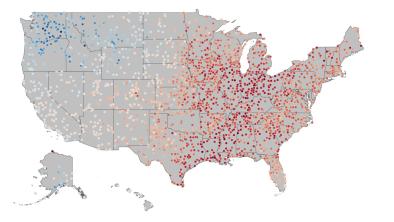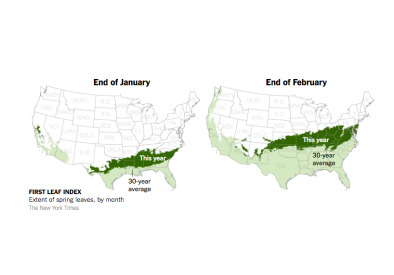Science Source
Large-scale variations in the vegetation growing season and annual cycle of atmospheric CO2 at high northern latitudes from 1950 to 2011
- Combines satellite and ground observations during 1950-2011 to study the long-term links between multiple climate (air temperature and cryospheric dynamics) and vegetation (greenness and atmospheric CO(2) concentrations) indicators of the growing season of northern ecosystems (>45°N) and their connection with the carbon cycle
- Finds that the thermal potential growing season has lengthened by about 10.5 days (P < 0.01, 1982-2011), which is unprecedented in the context of the past 60 years
- Finds the overall lengthening has been stronger and more significant in Eurasia (12.6 days, P < 0.01) than North America (6.2 days, P > 0.05)
- States this lengthening and intensification of the photosynthetic growing season, manifested principally over Eurasia rather than North America, is associated with a long-term increase (22.2% since 1972, P < 0.01) in the amplitude of the CO(2) annual cycle at northern latitudes
- Finds the springtime extension of the photosynthetic and potential growing seasons has apparently stimulated earlier and stronger net CO(2) uptake by northern ecosystems, while the autumnal extension is associated with an earlier net release of CO(2) to the atmosphere
Related Content
Headline

Mar 15, 2017 | NOAA Climate.gov
What Does 2017 Look Like in Your Neck of the Woods?
Real Time Data

Mar 15, 2017 | Global Historical Climatology Network–Daily (GHCN-D)
US Current Year Average Temp as Departure from Normal
Science Source
| World Weather Attribution
U.S. Heat, February 2017
Geert Jan van Oldenborgh, Andrew King, Friederike Otto et al
Headline

Mar 9, 2017 | New York Times
Spring Came Early. Scientists Say Climate Change Is a Culprit.


